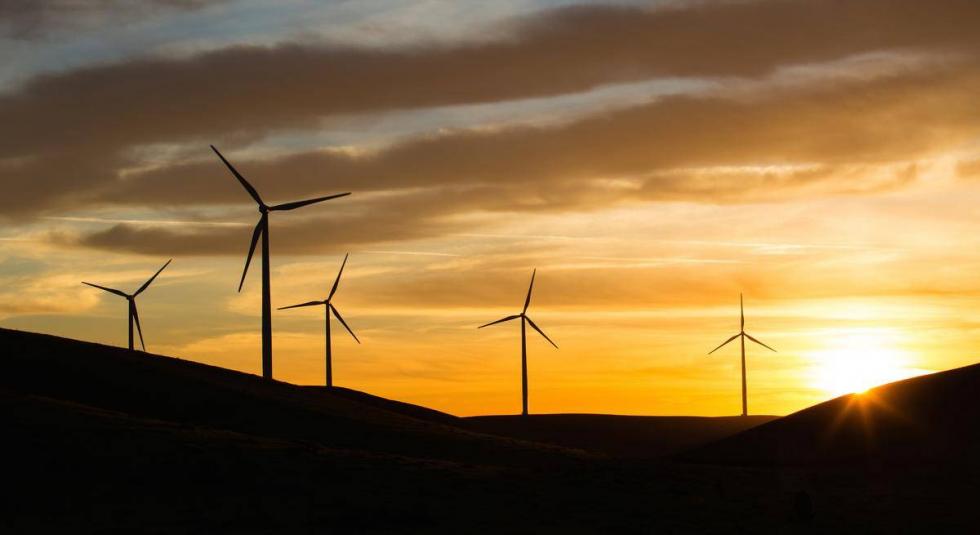Environmentalists are accustomed to notching wins in the California Legislature, where their projects often receive a friendly hearing from a supermajority of Democrats and a governor with a laser focus on climate change.
But there was an unexpected setback near the frantic end of the recent legislative session, when two energy-related proposals stalled.
There’s little lost in putting off one of them, the creation of a regional electricity grid that would supply the Western states, until lawmakers reconvene in January. But postponing Senate President Pro Tem Kevin de León’s plan to accelerate the “greening” of California’s own grid with more renewable energy could carry a price tag for consumers.
A new report from the state Public Utilities Commission found that the sooner the state’s electric power providers adopted more wind and solar energy, the cheaper that power would be. This is because existing federal subsidies for renewable-energy companies that sell power to utilities are scheduled to be phased out, making it more expensive to build wind and solar facilities and, ultimately, driving up costs.
In addition, the potential for related new jobs and cleaner air could be lost along with any subsidies, according to some experts.
De León’s proposal called for a modest nudge to the state’s renewable energy use, to 60 percent of its total by 2030, up from the current 50 percent. It set a goal of 100 percent by 2045. Proponents argued that ramping up renewable-energy procurement is attainable and climate-friendly. It could also could mean cheaper energy. The senator said he will bring the bill back next year, so there’s still time to help consumers.
“This would have further lowered our utility bills,” de León said in an interview. “This could have saved hundreds of millions of dollars if we procured power at a low cost before federal tax credits expire.”
State Senate leader Kevin de León at a solar installation
project. (CALmatters photo by Carl Costas)

Economists expect that, as California increasingly gets its power from renewable sources, it will spur clean-energy investment and technological efficiency, ultimately bringing down costs. It would also encourage those who develop renewable energy to move quickly on their most immediate projects.
Stanford engineering professor Mark Jacobson emphasized other benefits that accompany an increase in clean energy. He calculates that de León’s 100-percent goal would create at least 9,000 jobs in building and electrical trades, and “the health benefits are mind-boggling,” he said, noting that some 13,000 Californians die each year from cardiovascular, respiratory and other diseases that can be related to air pollution.
Jacobson, whose research focuses on large-scale renewable energy development, said if it were left to him, he would have designed an even more aggressive bill, calling for all energy sectors to be free of harmful carbon emissions by 2050. “It’s certainly feasible,” he said.
California is one of 29 states requiring utilities to get a specified portion of the power they sell from wind, solar and other renewable sources. The policy has significantly helped to lower greenhouse-gas emissions, although the state’s renewable energy requirements cover only electricity and not power for transportation or industrial heating, for example.
Windmills. Economists expect energy costs to drop as California
uses more renewable sources. (Photo by Carl Costa for CALmatter)

Other states have similar aspirations. Hawaii hopes to use 100 percent renewable energy by 2045, and New York aims for 50 percent by 2030.
Matthew Freedman, an attorney with the consumer group Utility Reform Network, agreed that the state missed out by not accelerating its goals this year.
“The failure of California to move quickly to take advantage of federal tax credits is a missed opportunity,” he said. “You never know what’s going to happen with federal tax policy.”
The utilities commission has been studying various scenarios for reaching California’s renewable-energy targets and reducing harmful emissions, and what it might cost. Its most recent analysis takes into consideration the scheduled sharp decline in federal tax credits for large-scale wind and solar projects, credits set to be all but eliminated by 2030.
Based on that assumption, the report calculated that a “buy sooner” strategy would save consumers between $140 million and $250 million a year, depending on the benchmark.
“If procurement is deferred until after tax credits expire,” a July report from the commission concluded, “2030 costs to ratepayers may increase significantly; in other words, accelerated procurement of renewables … (in spite of current surplus) could result in significant savings if tax credits are not extended.”
The federal Investment Tax Credit for solar projects is 30 percent of a project’s cost through 2019, stepping down to 10 percent in 2021 and thereafter. The Production Tax Credit for wind-energy development is 2.3¢ per kilowatt hour of energy produce will decline and then and sunset in 2020.
Developers need no reminder of the expiring tax breaks. “There is a very short window of opportunity right now; there could be several hundred millions dollars in savings over the next ten years,” said Jan Smutny-Jones, CEO of the Independent Energy Producers Assn., a trade group for developers of natural gas and renewable energy.
He said tax credits account for as much as a third of the capital costs to build large-scale wind and solar installations. The incentives, he said, have stimulated technology and dropped the price of green power.
But “there is a pretty wide expectation in the industry that those tax credits will not be extended,” Smutny-Jones said.
The state’s three largest utilities opposed de León’s bill, saying that although they support renewable energy, the proposal did not contain enough protections for consumers.
In a joint statement released the last week of the legislative session, the state’s large utilities—San Diego Gas and Electric, Southern California Edison and Pacific Gas and Electric—said the bill “does not protect customers from high costs and ensure equitable cost allocation.” The measure did not “allow regulators to hit the brakes if customer costs are not affordable.”
In addition, the power companies expressed concerns about how the influx of renewable energy would affect the flexibility and reliability of California’s electricity supply.
De León’s bill languished after being unexpectedly drawn into the legislative vortex in the waning days of the session.
When it was introduced months ago, there was little opposition. The proposal to create a Western-wide electricity grid that the state would no longer control, on the other hand, arrived late, was complicated and controversial and attracted the attention of powerful political forces: big utilities and labor unions.
In the complicated physics that govern the movement of legislation in Sacramento, the fortunes of the two “grid” bills were tied together and, as prospects for the second measure dimmed, de León’s bill was never brought to a vote in the Assembly.
The Senate leader vowed to “double-down’” to advance his legislation next year.
“This is not over; we’re still alive,” he said. “This about providing a vision that is doable, that is within reach. It’s about charting the course.”
CALmatters.org is a nonprofit, nonpartisan media venture explaining California policies and politics.



